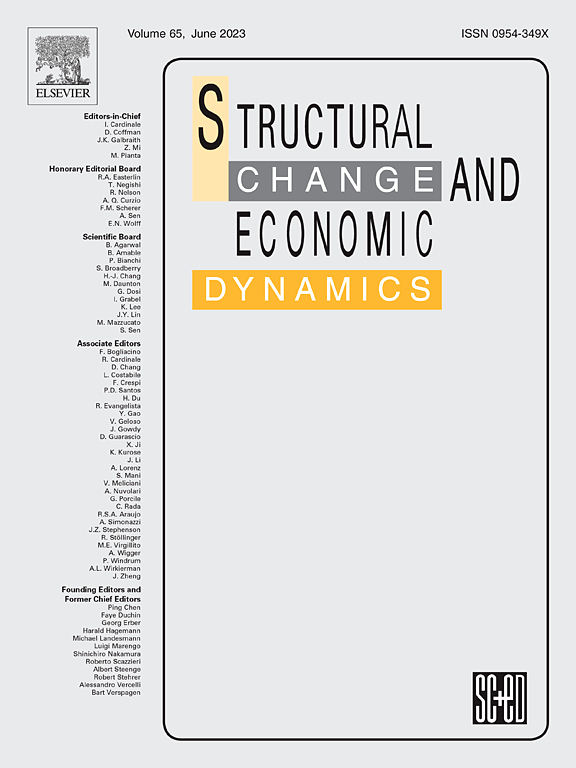Industrial robots and employment change in manufacturing: A decomposition analysis
IF 5.5
2区 经济学
Q1 ECONOMICS
引用次数: 0
Abstract
This paper examines the contribution of industrial robots to employment change in manufacturing in a sample of 17 European countries and the USA over the period 2004 to 2019. We combine index decomposition analysis (IDA) and production-theoretical decomposition analysis (PDA). First, we use IDA to decompose employment change in the manufacturing industry into changes in (aggregate) manufacturing output, changes in the sectoral structure of the manufacturing industry, and changes in labour intensity (the inverse of labour productivity) which is a composite index of labour intensity change within each of the nine sub-sectors of total manufacturing. Second, we use PDA to further decompose labour intensity change to isolate the contribution of technical efficiency change, technological change, human capital change, change in non-robot capital intensity and change in robot capital intensity to employment change. In almost all of the countries considered, labour intensity is falling in entire manufacturing, exerting a dampening effect on employment. Robotisation contributes to this development by reducing labour intensities and employment in all countries and sub-sectors, though to varying degrees. Manufacturing output, in turn, grows in all countries except Greece, Spain and Italy, which increases employment and counteracts or in some countries even more than offsets the dampening effect of declining labour intensities. The structural change within manufacturing has an almost neutral effect in many countries.
工业机器人与制造业就业变化:一个分解分析
本文以2004年至2019年17个欧洲国家和美国为样本,研究了工业机器人对制造业就业变化的贡献。我们将指数分解分析(IDA)和生产理论分解分析(PDA)相结合。首先,我们使用IDA将制造业的就业变化分解为(总)制造业产出的变化,制造业部门结构的变化和劳动强度的变化(劳动生产率的反比),劳动强度变化是总制造业九个子部门中每一个部门的劳动强度变化的综合指数。其次,利用PDA进一步分解劳动强度变化,分离技术效率变化、技术变化、人力资本变化、非机器人资本密集度变化和机器人资本密集度变化对就业变化的贡献。几乎在所考虑的所有国家中,整个制造业的劳动强度都在下降,这对就业产生了抑制作用。通过降低所有国家和分部门的劳动强度和就业,尽管程度不同,机器人化有助于这一发展。反过来,除了希腊、西班牙和意大利之外,所有国家的制造业产出都在增长,这增加了就业,抵消了——在某些国家甚至超过了——劳动强度下降的抑制效应。制造业内部的结构变化对许多国家的影响几乎是中性的。
本文章由计算机程序翻译,如有差异,请以英文原文为准。
求助全文
约1分钟内获得全文
求助全文
来源期刊

Structural Change and Economic Dynamics
ECONOMICS-
CiteScore
9.60
自引率
4.90%
发文量
159
期刊介绍:
Structural Change and Economic Dynamics publishes articles about theoretical, applied and methodological aspects of structural change in economic systems. The journal publishes work analysing dynamics and structural breaks in economic, technological, behavioural and institutional patterns.
 求助内容:
求助内容: 应助结果提醒方式:
应助结果提醒方式:


